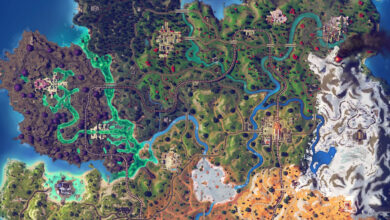Minecraft (2009) Game Icons and Banners: A Visual Evolution

Minecraft,” released in 2009 by Mojang Studios, is one of the most popular sandbox video games ever created. The game’s success lies in its simplicity, creativity, and the open-world freedom it offers players. Over time, Minecraft has grown beyond just a game; it has developed a rich culture that includes custom banners, icons, and other visual elements used by players and servers to express individuality. This article delves into the visual evolution of Minecraft, focusing on the in-game banners and icons that have become crucial to its identity.
The Role of Icons in Minecraft
Icons are a critical part of Minecraft’s user experience, offering visual clarity to gameplay mechanics, items, and status effects. Since the game’s early days, the minimalist yet distinctive pixelated icons have helped players navigate the blocky world. The icons cover everything from tools like pickaxes and shovels to health bars, hunger levels, armor durability, and potion effects.
Icons in Minecraft aren’t just about functionality—they’ve grown into a form of expression. With the introduction of texture packs (or resource packs), players can modify in-game icons, altering their look and feel to suit personal preferences. Whether it’s a medieval, futuristic, or whimsical theme, custom icons help players transform their gameplay experience, making Minecraft uniquely personal.
Minecraft Banners: More than Decoration
While icons serve a functional purpose, banners offer creative expression. Banners were introduced in version 1.8 of the game, allowing players to create custom flag-like structures. These banners can be placed around a player’s base, used as shields, or even represent a group or faction on a multiplayer server. The design of a banner can be customized with a variety of colors and patterns, giving players endless possibilities to showcase their creativity.
Here are some key features of Minecraft banners:
- Customization: Players can create custom banners by combining different dyes and shapes in the crafting table or loom.
- Factions and Symbols: On multiplayer servers, banners often act as faction flags, displaying symbols that represent teams, alliances, or clans.
- Shields: Banners can be combined with shields, allowing players to display their banner designs on the equipment they carry into battle.
Evolution of Game Icons and Banners Over the Years
Since its launch in 2009, Minecraft has seen numerous updates, with game icons and banners evolving as part of this. Early versions of the game had basic, low-resolution icons, which matched the minimalistic pixel art style of the game. As Minecraft’s graphical capabilities improved, more detailed and complex icons were introduced without losing the charm of the game’s retro aesthetic.
Similarly, banners have become more sophisticated. In the early days, player expression was limited to wool blocks and rudimentary patterns. With each update, the possibilities for customization have grown, and now, players can make incredibly intricate banner designs with multiple layers and color combinations.
Community Contributions to Minecraft Icons and Banners
One of the most exciting aspects of Minecraft’s visual evolution is the contribution of its vast community. Players worldwide have created texture packs, mods, and custom banners, allowing others to download and use them in their own games. Popular community-driven sites like Planet Minecraft host thousands of user-created icons and banners, offering endless inspiration.
Some servers also use custom icons to mark specific game modes or rank systems. For example, in multiplayer mini-games or role-playing servers, icons may signify team colors, items with special abilities, or the status of players. Banners often serve as identifying symbols in large-scale games such as “Capture the Flag” or “Faction Wars.”
Conclusion
The evolution of Minecraft’s game icons and banners from its early days in 2009 highlights the balance between simplicity and creative freedom that makes Minecraft so beloved. Whether through in-game tools or the efforts of the community, Minecraft continues to be a canvas for players to express themselves visually, making every world as unique as its creator.
As Minecraft grows, it’s clear that icons and banners will continue to play a vital role in how players experience and customize their gameplay.



